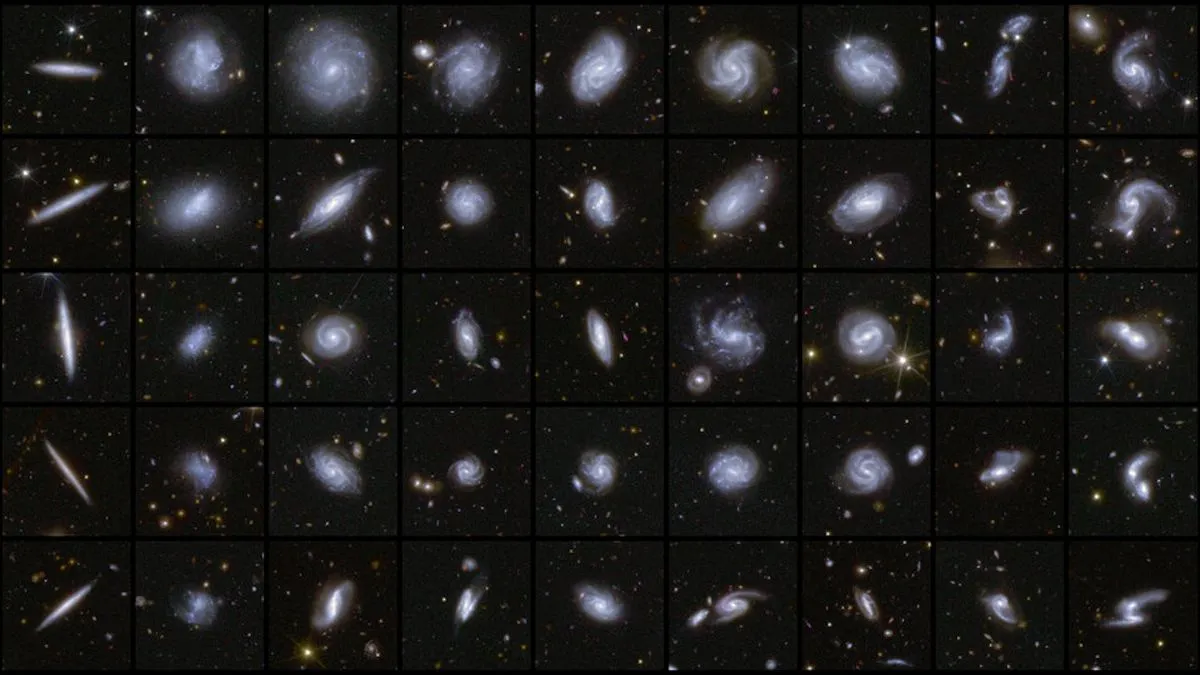
The European Space Agency (ESA) has made a monumental leap in our understanding of the universe with the release of the first batch of data from the revolutionary Euclid space telescope. This telescope is specifically designed to delve into the enigmas of dark matter and dark energy, two of the most perplexing components of our cosmos. The initial survey data, disclosed on March 19, includes scans of three key regions that Euclid will observe on a regular basis, along with detailed classifications of over 380,000 galaxies. Remarkably, this number represents only a tiny fraction—just 0.4%—of the galaxies that scientists anticipate cataloging during the mission's projected six-year duration.
With the unveiling of this first data set from Euclid's survey, we are opening the door to a treasure trove of insights for researchers eager to tackle some of the most profound questions in modern science. Carole Mundell, ESA's director of science, emphasized the importance of this data release, stating, "We are unlocking a treasure trove of information for scientists to dive into."
Launched in July 2023 and starting its data collection in February 2024, Euclid aims to meticulously map the large-scale structure of the universe. By analyzing the shapes, sizes, and distribution of galaxies, scientists hope to gain a clearer understanding of the nature of dark matter and dark energy—mysterious forces that constitute an estimated 95% of the universe but do not interact with light, making them difficult to study directly.
Clotilde Laigle, a scientist with the Euclid Consortium at the Institut d'Astrophysique de Paris, remarked on the telescope's potential, stating, "The full potential of Euclid to learn more about dark matter and dark energy from the large-scale structure of the cosmic web will be reached only when it has completed its entire survey." However, even this initial data release provides an unprecedented glimpse into the large-scale organization of galaxies, which will enhance our understanding of galaxy formation over time.
The March 19 release includes a single scan of each of the deep-field regions—three areas of the sky that Euclid will revisit multiple times to capture images of the universe's depths. In these early images, the telescope identified an astonishing 26 million galaxies, with the farthest ones located 10.5 billion light-years away. To put this into perspective, a light-year is the distance that light travels in one year, approximately 5.9 trillion miles or 9.5 trillion kilometers.
Valeria Pettorino, the Euclid project scientist at ESA, shared insights on the telescope's observing strategy: "We will observe each deep field between 30 and 52 times over Euclid's six-year mission, each time improving the resolution of how we see those areas and the number of objects we manage to observe." The prospects for new discoveries are immense.
Throughout its mission, Euclid is expected to capture images of approximately 1.5 billion galaxies, generating around 100 gigabytes of data daily. To manage this vast influx of information, Euclid scientists are leveraging artificial intelligence (AI). In 2022, nearly 10,000 volunteers from the citizen science project Galaxy Zoo contributed to training the ZooBot AI algorithm to identify various features of galaxies, such as spiral arms, in the early images captured by Euclid.
Laigle elaborated on the telescope's comprehensive approach: "We're looking at galaxies from inside to out, from how their internal structures govern their evolution to how the external environment shapes their transformation over time." The wealth of data generated by Euclid is poised to have a significant impact, influencing studies on galaxy evolution and contributing to broader cosmological goals.
As we stand on the brink of a new era in cosmic research, the insights gained from the Euclid space telescope will undoubtedly reshape our understanding of the universe. The mission is not just about cataloging galaxies; it's a quest to unravel the fundamental mysteries of dark matter and dark energy, ultimately leading us closer to understanding the very fabric of the cosmos.